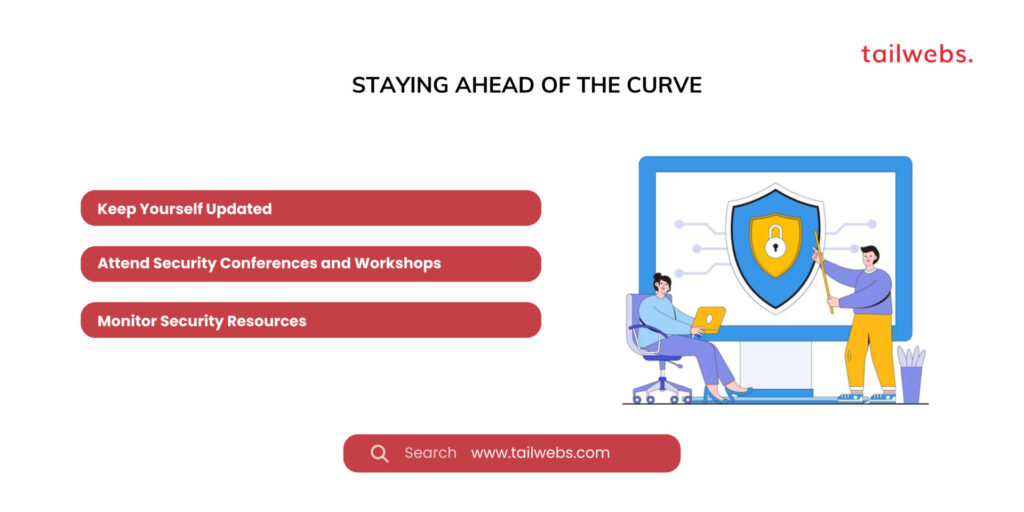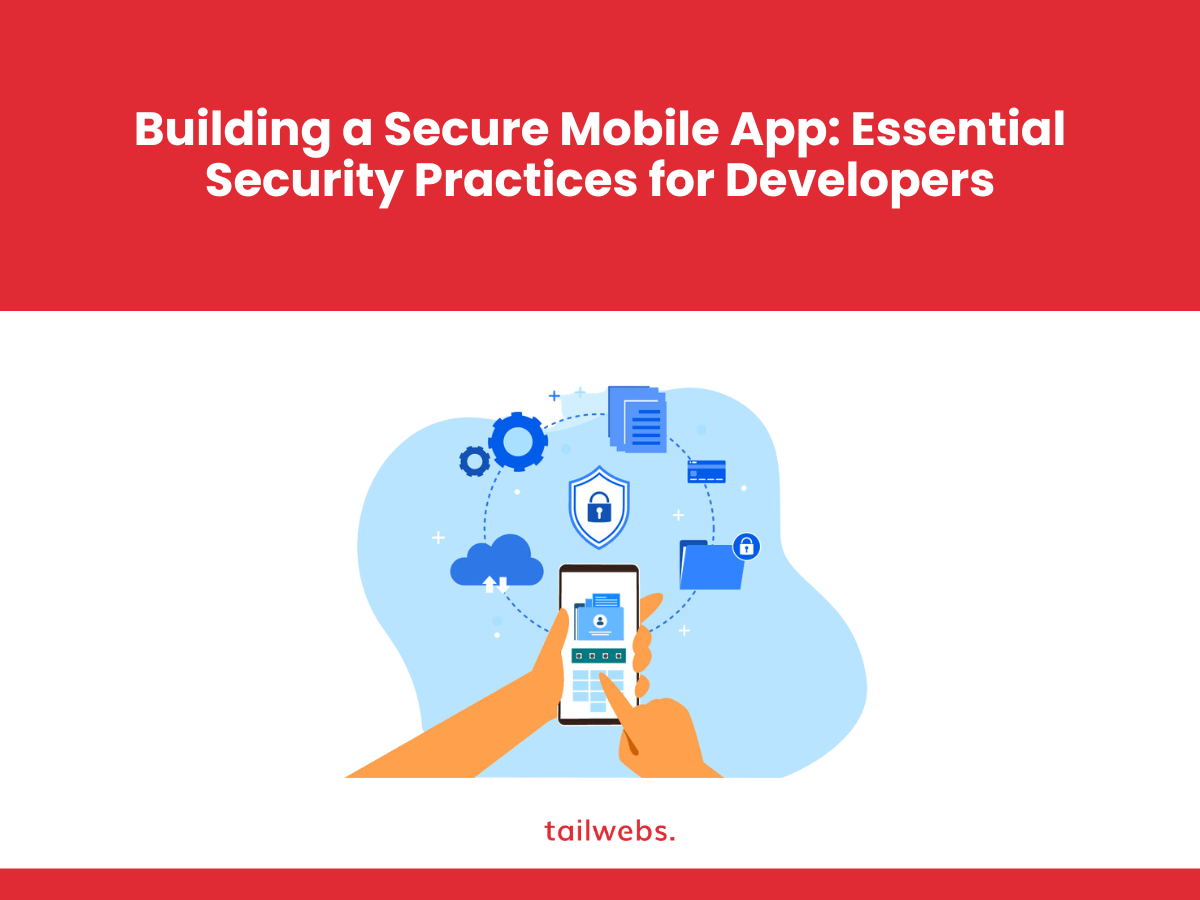In today’s digital landscape, mobile apps are ubiquitous, holding our personal information, financial data, and even our daily routines in their digital palms. But with great convenience comes great responsibility. Ensuring the security of these apps is paramount, not just to protect users but also to build trust and avoid potential legal repercussions.
For developers, navigating the ever-evolving world of mobile app security can feel daunting. But fear not! This guide will equip you with essential security practices to build a fortress around your mobile app, safeguarding user data and ensuring a smooth sailing experience.
1. Laying the Foundation: Secure Coding Practices
Input Validation:
Data entered by users can be a gateway for vulnerabilities. Implement robust input validation to ensure only expected data formats and values are accepted, preventing SQL injection attacks, cross-site scripting, and other malicious code injection attempts.
Secure Storage:
User data, especially sensitive information like passwords, should never be stored in plain text. Utilise encryption algorithms like AES-256 or secure key vaults to protect data at rest and in transit.
Memory Management:
Improper memory management can lead to memory leaks, exposing sensitive data and creating vulnerabilities. Implement secure memory allocation and deallocation practices to prevent such risks.
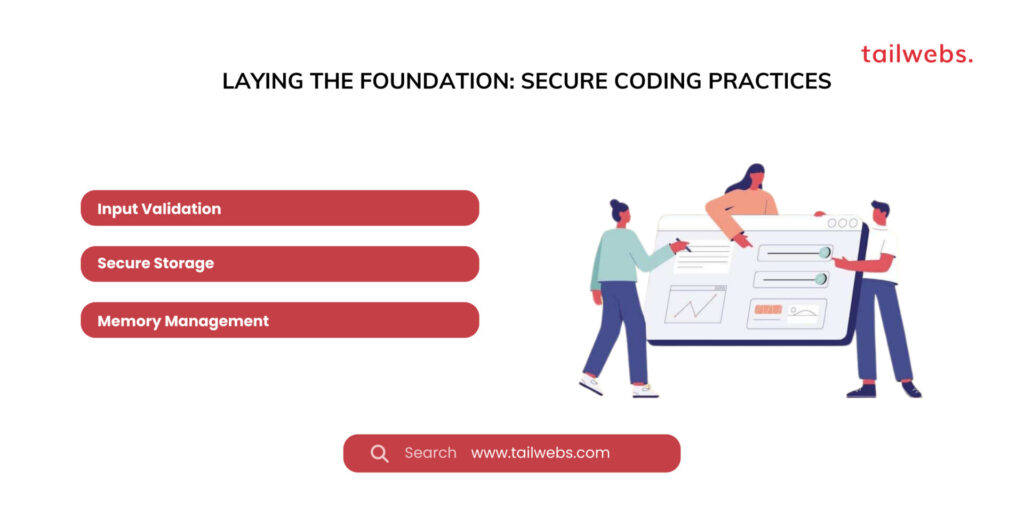
2. Building Strong Authentication and Authorization Walls
Multi-factor Authentication (MFA):
Don’t rely on passwords alone! Implement MFA, requiring users to provide additional verification factors like fingerprints, one-time passwords, or security questions for robust access control.
Secure Session Management:
Maintain secure session IDs and implement session timeouts to prevent unauthorised access and session hijacking.
Role-based Access Control (RBAC):
Grant users access only to the data and functionalities they need based on their roles, minimising the potential damage caused by unauthorised access.
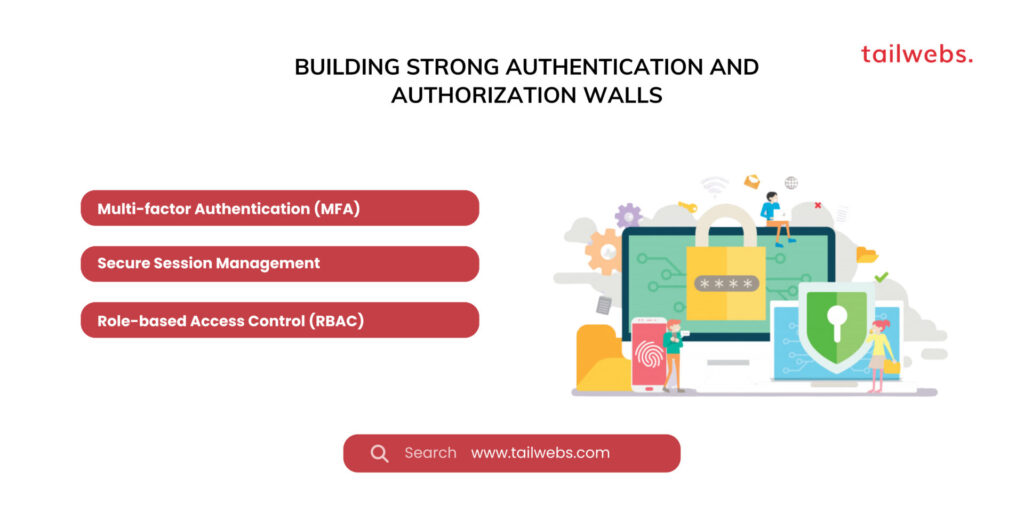
3.Data Security: Treasure Trove Protection
Data Encryption:
Encrypt data at rest and in transit using strong encryption algorithms like AES-256 to protect it from interception and unauthorised access.
Secure Network Communication:
Utilise secure protocols like HTTPS and TLS to encrypt communication between your app and servers, preventing man-in-the-middle attacks and data breaches.
Data Minimization:
Collect and store only the data necessary for your app to function. Avoid unnecessary data collection and storage to minimise the potential attack surface.
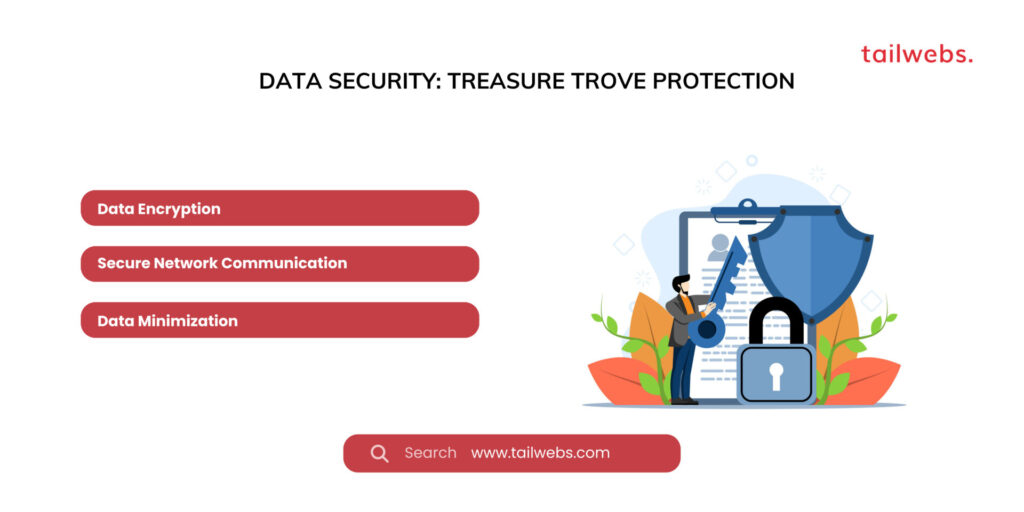
4. Vulnerability Management: Patching the Leaks
Regular Security Audits:
Conduct regular security audits of your app to identify and address potential vulnerabilities before attackers exploit them.
Vulnerability Patching:
Keep your app libraries, frameworks, and dependencies updated with the latest security patches to address known vulnerabilities and prevent exploits.
Secure Development Lifecycle (SDLC):
Integrate security practices throughout your development lifecycle, from code reviews to testing and deployment, to proactively prevent vulnerabilities.
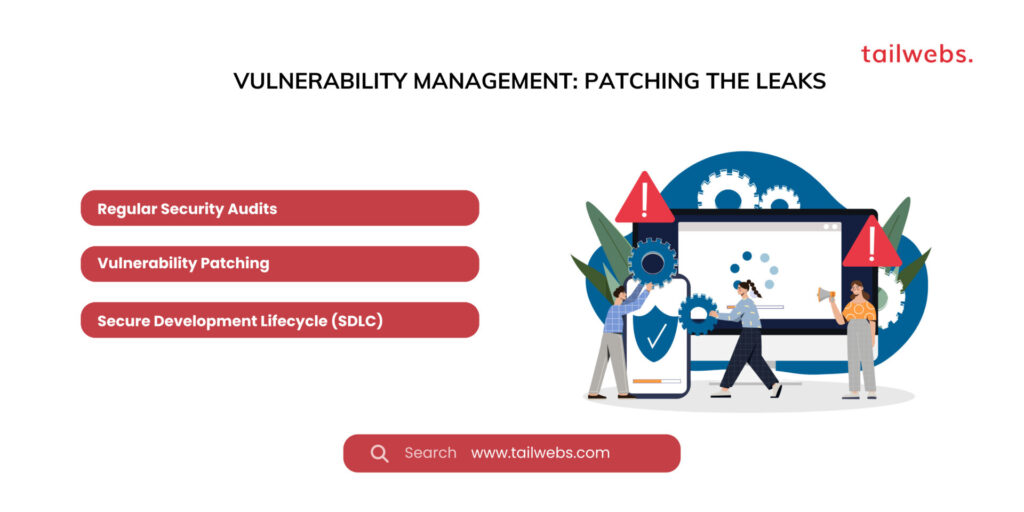
5. User Education: Building a Security-Conscious Community Security Practices
Informative Privacy Policy:
Clearly explain how your app collects, uses, and protects user data in a user-friendly privacy policy.
Security Awareness Training:
Educate your users about common mobile app security threats and best practices like strong passwords and avoiding suspicious links and downloads.
Feedback Channels:
Encourage users to report any suspicious activity or potential security vulnerabilities through secure channels to facilitate prompt action.
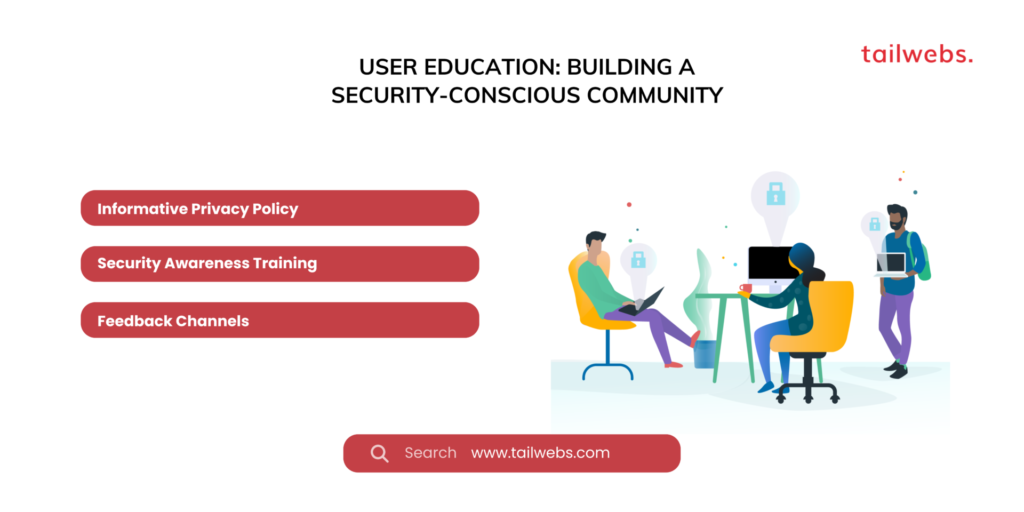
Building a Secure Mobile App: A Journey, Not a Destination
Mobile app security is an ongoing journey, not a one-time event. By implementing these essential practices, staying informed about evolving threats, and building a security-conscious culture, you can create a mobile app that not only delivers value but also protects your users and their precious data. Remember, security is not just a technical challenge; it’s a responsibility we all share.
While the core practices already discussed lay a solid foundation, additional measures can further bolster your app’s security posture:
Code Obfuscation:
Make your app’s code more difficult to understand and reverse engineer, hindering attackers’ ability to exploit vulnerabilities.
Jailbreak Detection:
Implement mechanisms to detect and prevent app execution on jailbroken devices, which often bypass security restrictions.
Tamper Detection:
Monitor for signs of app tampering, including modifications to code or resources, to identify potential security compromises.
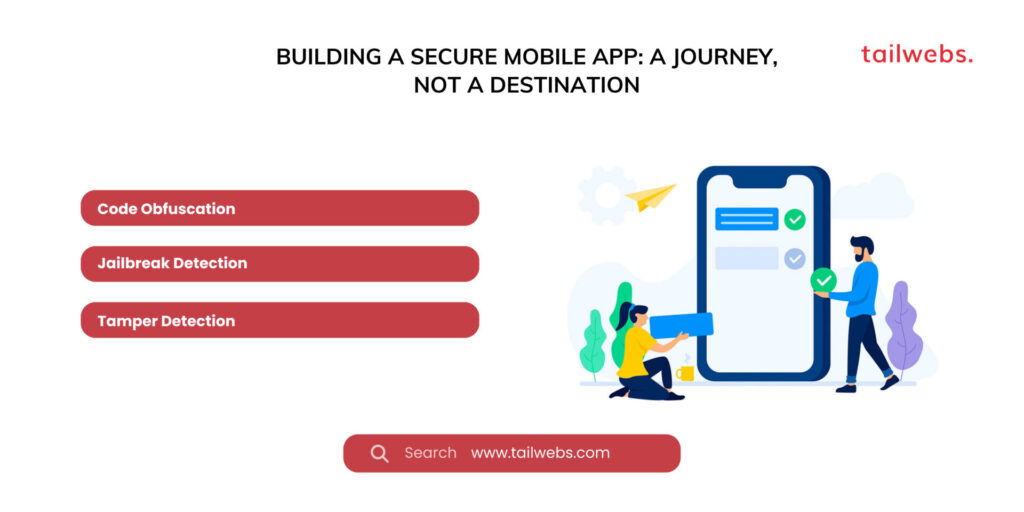
Securing Your Development Environment:
Secure Code Repositories:
Utilise secure code repositories like GitLab or GitHub Enterprise with access control and audit logs to prevent unauthorised access and code leaks.
Continuous Integration and Continuous Delivery (CI/CD):
Integrate security scanning and testing tools into your CI/CD pipeline to automatically identify and address vulnerabilities throughout the development cycle.
Threat Modelling:
Perform threat modelling exercises to proactively identify potential threats and vulnerabilities and implement appropriate mitigation strategies.
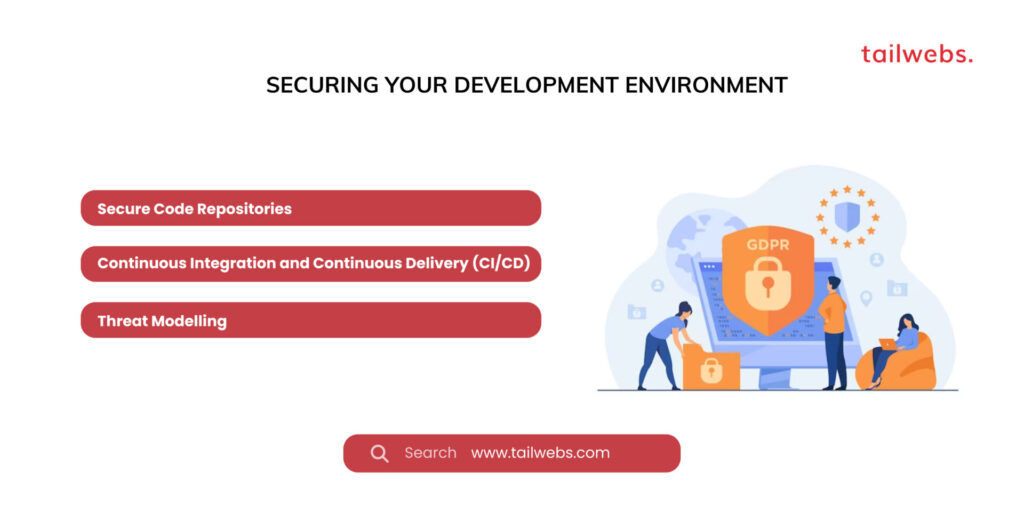
Staying Ahead of the Curve:
Keep Yourself Updated:
Regularly learn about new security threats, vulnerabilities, and best practices to stay ahead of the evolving landscape.
Attend Security Conferences and Workshops:
Participate in security conferences and workshops to network with other developers and gain insights from industry experts.
Monitor Security Resources:
Subscribe to security blogs, newsletters, and advisories to stay informed about emerging threats and patch releases.
Remember, mobile app security is a shared responsibility. By collaborating with security experts, designers, and other stakeholders, fostering a security-conscious culture within your organisation, and continuously adapting your strategies, you can build a mobile app that’s not just user-friendly but also stands tall against ever-evolving security threats.
This guide provides a comprehensive overview of essential security practices for developers. However, the field of mobile app security is vast and constantly evolving. Feel free to explore additional resources, delve deeper into specific topics, and tailor your security approach to your specific app and development context. By prioritising security throughout the development lifecycle and embracing a culture of continuous improvement, you can build a mobile app that not only delivers value but also earns the trust and confidence of your users.
